Durango and the Durango & Silverton Narrow Gauge Railroad: Southwest Adventure 2016
Smell is as powerful as any other sense when it comes to triggering and forming memories. Smoke mixed with valve oil and steam from a coal fired stem engine is one of those triggers for me.
In late October of 2016, my family and I embarked on a 14 day road trip adventure around some of the American Southwest. This is the third installment in a series of posts detailing that trip. The first two posts detailing road tripping, driving, and traveling and the Grand Canyon National park can be found through those links.
Our second destination was Durango, Colorado. Home of the Durango and Silverton Narrow Gauge Railroad and a close neighbor to Mesa Verde National Park.
Why Durango?
Why not?
When we were planning this road trip, I made the off comment that we were only a couple of hours away from Durango and riding the Durango and Silverton Narrow Gauge railroad.
The truth is my mom and I love train rides. I think that’s mostly my fault, when I was young I was really into trains and persuaded my parents to go out to Colorado to ride the narrow gauge railroads scattered around the state. For some of us, one you have steam and cylinder oil in your blood, and soot in your eyes, you’re inexorably hooked.
Those trips in the late 90s, in part prompted our trip on the White Pass and Yukon Route out of Skagway, Alaska when we were there in 2015.
The White Pass is an interesting trip, but it lacked one thing: steam.
Durango is truly a railroad town. It was founded essentially by the Denver and Rio Grande (D&RG) railroad in September of 1880 after the town of Animas City refused the offer of a station. Of course, it’s not hard to imagine what happened next. Animas City was eventually subsumed into the rapidly growing Durango. After all, at a time when the railroad is the most significant means of transportation for people and industry, where the railroad depot ends up is important.
The railroad arrived in Durango in August of 1881, just under a year after the founding of the city. And quickly began pushing the track up the Animas River Valley to Silverton. By late 1882 the rail line was complete. Just in time for the silver panic of 1883.
The D&RG (later Denver and Rio Grande Western or D&RGW), wasn’t the only railroad to operate out of Durango. In 1890, Otto Mears began construction on his largest railroad endeavor, the Rio Grande Southern (RGS). The Rio Grande Southern ran west out of Durango, to Dolores, where it turned northeast, back into the western slopes of the San Juan to Rico, Telluride, and eventually reconnecting with the D&RGW at Ridgeway, Colorado.
When driving in to Durango from the West on US 160, there are several sections between Mancos and Durango itself, where the highway either immediately parallels or was built over the Rio Grande Southern’s right of way.
For me one of the nice things about Durango is that there’s a real solid mix of historic and modern, in a rather nice small town.
Every time we’ve stayed in Durango we’ve stayed at the General Palmer Hotel (I am currently unsure if they have a website and what it is). The building was originally built in 1898 and retains much of the character that you’d expect from a high end Victorian building of that period. The rooms have been updated to modern comforts, though they still retain the Victorian style fitting of the hotel.
Every time we’ve been in Durango though, we’ve been there for the train, and the General Palmer is literally located at the front gate of the depot and yard. For me, as a photographer, I can literally walk out the back door, maybe 50 feet down the West Collage Drive, and be photographing a nearly 100 year old steam engine at the head of a departing train.
However, while Main Avenue is lined with historic buildings, it’s also very much the hub of Durango’s city center and contains a wealth of excellent restaurants and shops. While I haven’t written much about food in these posts, I ought to. Both the Palace Restaurant and the Steamworks Brewing Company both had, by my tastes at least, very good food.
Riding and Photographing The Durango and Silverton Narrow Gauge Railroad
The reason we were in Durango was to ride the Durango and Silverton Narrow Gauge (D&SNG) railroad. I have a long history with trains, and a pretty long history with the D&SNG. The first time I rode it was in 1997, and here nearly 20 years later I’m back to ride it again.
I wrote about my experiences on, and a bit of history about, the White Pass & Yukon back in the summer of 2015. In so far as the photography, history, and experience goes it may be useful to go back and read that article. Though it isn’t absolutely necessary by any means.
A Bit of D&SNG History
The line that’s now the Durango and Silverton Narrow Gauge railroad was originally built by the Denver and Rio Grande in the early 1880s to haul ore out of the San Juan Mountains, specifically around the Silverton area. In many ways, the D&RG was doing exactly the same thing as the White Pass and Yukon (WP&Y) was, follow the precious metals, haul people and goods in, and the ores out.
Both the D&RG and the WP&Y were built to a gauge of 3 feet between the rails. This is narrower, than the standard of 4’ 8–1/2″ that most railroads use (even today), hence the Narrow Gauge in the current operators name.
Building to a narrower gauge has a number of benefits in reducing the costs associated with building a railroad, especially in a mountainous region.
The narrower track gauge meant smaller engines and cars, which in turn meant that tunnels and cuts could be made smaller, and curves could be made tighter. Tight curves, help by allowing the route to curve up and back through narrow side canyons while maintaining reasonably (though still steep) grades, instead of having to bore expensive tunnels.
However, unlike the White Pass, the D&GR was not isolated from the rest of the North American rail network by an ocean. This changed the economics of the situation tremendously. The D&RG initially built all of their lines as 3-foot gauge routes. However, by 1887 the railroad was already converting to standard gauge.
While building to a narrow gauge helps save money up front, the long term operating costs are worse. When the railroad also interchanges with the rest of a national rail network, this is even more of a problem. Small engines — even the largest engines used by the D&RGW in the 30s and onward were tiny by standard gauge railroad standards — combined with steep grades and small cars meant that trains on the narrow gauge hauled less tonnage. This in turn meant more trains, and thus more train crews, would be needed to move the same tonnage as a single standard gauge train.
Moreover, when cargo needed to be moved to or from a point outside of the narrow gauge, the goods had to be transferred to standard gauge cars at some point. This process was largely a manual affair, involving significant labor.
The differences in economics between the isolated White Pass and the national rail network connected (and increasingly standard gauge) D&RGW is staggering. The last new narrow gauge engines the D&RGW bought were the K–36 class in 1925. The next round of narrow gauge engines the railroad would procure, would come from a rebuilding program that converted 10 older smaller standard gauge 2–8–0s to narrow gauge 2–8–2s of the K–37 class.
From the 1930s on, the D&RGW would not seek any further significant new locomotive power — only a small 160 HP diesel mechanical switch engine bought second hand would be acquired. In fact, starting in the late 1950s with the completion of roads into many of the areas that the railroad once served, the D&RGW would start to look for ways to abandon the lines, not improve them.
However, it’s largely the economics of trying to increase the costs to justify abandoning the line that has created the D&SNG (and Cumbres and Toltec Scenic railroad) that are what they are today. When the White Pass was investing in modern diesel motive power in the 40s and 50s to reduce costs and improve efficiency, the D&RGW was continuing to operate their increasingly expensive steam engines in part to make the line less profitable and better candidates for abandonment.
Today the White Pass has 2 operation steam engines that are only used for special excursions. The vast majority of the White Pass’s passengers are hauled by diesels. Conversely, on the D&SNG, the passenger trains are pulled by steam engines, and diesels are used as backup power, for switching and maintenance of way trains, and at times of extremely high fire danger.
Riding the D&SNG
The point of our stop in Durango was to ride the train, so I think it warrants a few words on actually riding it.
Unlike the White Pass, where you pick your car and seat when you get on the train, tickets on the D&SNG are for an assigned seat. Moreover, there are several classes and options to choose from, from open excursion cars and historic enclosed coaches, to parlor car and even presidential class. Unlike the White Pass, you’re not confined to your car, you can move about the train. In fact, if you’re not in one of the first class cars, you may well want to take a stroll to the concession car and buy a hot or cold drink or something to snack on.
Also, unlike most, if not all, of the trips on the White Pass, the complete train is turned on the D&SNG — either at Silverton for the full length trips, or at Cascade Canyon Wye for the shortened winter trips. As a rider, this means that you sit on opposite sides of the track on the ride up and the ride back. That is, if you’re on the East side of the train (the line runs north-south) on the trip from Durango to Silverton, you’ll be on the West side of the train on the trip back. Or put another way, if your seat is on the left side of the train, it will always be on the left side of the train.
Assigned seats, combined with turning the train, means that there may be value in picking a side. This is especially important if you’re interested in photography and want to take pictures with good light.
For example, the Highline hugs the western side of the Animas River Gorge. In the morning, on the northbound trip, people on the right side of the car are the ones sitting on the gorge side with the best views of the train on curves. In the afternoon, it’s the people who are sitting on the left side of the cars that get to stare down the drop into the river below.
The other big choice when booking is class; that is, standard, deluxe, or first.
The first several times I rode the D&SNG (1997–1998) we road in standard class open observation cars. In my opinion, these are a lovely way to go. They’re covered so you mostly stay out of the rain and sun, but the sides are free of windows and significant obstructions, so the views are amazing. The only real down side is that they have the potential to get quite cold if you’re not prepared. Unless the weather is forecast to be sunny and 80+, I’d make sure I had at least a wind proof jacket or shell with me.
This last time we stepped up to ride in the first class accommodations, riding the Knight’s Sky.
The Knight’s Sky is like riding an open excursion car but on steroids. The sides are either open in the summer, or entirely large glass windows in the winter months. However, the thing that really separates the Knight’s Sky from the regular observation cars is the roof; it’s all UV blocking glass. Riding in the car gives you a complete unobstructed view of the mountains surrounding the line.
(The D&SNG also has a recreation of the D&RGW’s Silver Vista, which is similar to the Knight’s Sky with a glass roof and first class car status, but it lacks the covered end platforms of the Knight’s Sky.)
Additionally, the Knight’s Sky is a first class car with added benefits. On the basic side, cars are outfitted with reclining individual seats (old school first class airline seats that have been refurbished), unlike the bench seats found in most of the other cars.
The other first class perk, is a dedicated car attendant who provides some insightful information about the history of the line and sights to look for, also fetches drinks (non-alcoholic drinks are complementary for first class passengers) for the car’s occupants. On our trip, there was also complementary banana nut bread and caramel-corn that was really tasty too.
While my mom and I are fans of train rides, my dad is somewhat less enthusiastic about them. Even he enjoyed the ride from the comfy seat with a tasty drink, and some informative commentary about what was coming up. As for me, I ended up standing on the end platform most of the time. Go figure, the first day I wasn’t walking 5 plus miles, I was standing for 90 miles (round trip) on a train.
However, standing or sitting, I know I have a strong preference for being back in the Knight’s Sky. Barring that, I think I’d go back to the plane old open observation cars. The 3 other first class cars, enclosed parlor cars, don’t really interest me.
Challenges and Opportunities Photographing the D&SNG
When it comes to photographing trains, by far the best way to do it, is to not be on the train at all. Instead you want to seek out a compelling scene and wait for the train to pass through it.
As always when photographing trains, your safety is your responsibility. Do not trespass on the railroad’s right of way.
Line Side Opportunities
From the depot, the line is directly adjacent to Narrow Gauge Ave. until it joins US 550. US 550 then parallels the line until it swings under the highway and off towards Rockwood and the Highline. Depending on the kinds of images you’re looking for, there are plenty of opportunities to photograph the train simply by pulling off the highway and shooting from the shoulder.
One note, this section of the line is straight and the trains do move along here at a good clip; around 20 MPH.
Rockwood is the start of the Highline, the impressive segment where the railroad hugs the wall of the Animas River Gorge. There’s a small yard at Rockwood and some trains stop there to pickup and offload hikers. Rockwood can be access by car form the US 550 by turning off at County Road 200. I’ve never been through Rockwood by car, so I can’t attest to the viability of it photographically.
The Highline is arguably the most spectacular part of the railroad both photographically and just to experience it. As far as I know, there are hiking trails into that area, at least there are some that clearly show up on satellite views of the areas. Again, this is not an area I’ve ever ventured into off the train.
From the Highline to Silverton, the railroad is mostly inaccessible to those who aren’t on the train. That said, the railroad does offer wilderness access fairs to hikers going into the San Juan National Forrest and Weminuche Wilderness. In addition there is the Tall Timber Resort that sits directly on the D&SNG main line — and uses the D&SNG for access.
In Silverton the line comes out of the valley and parallels Country Road 31 until it crosses the Mineral Creek. In Silverton proper, the D&SNG depot and associated yard are open to the public as a museum. Parking is just behind the depot off 10th street. There’s a number of nice opportunities to photograph the train as it passes the depot and through and by various equipment in the yard.
From the Train Itself
Shooting from the train, especially pictures of the train from the train, presents a much more challenging proposition. To start with there’s the problem of being too close or too far from the engine to be able to work effectively.
On the White Pass, where I could pick a car, I could pick a car that was 3–5 cars back from the engine. That was a guess, but it was a guess based in part on my experience with narrow gauge trains and their tight curves.
The D&SNG works differently. To start with, the trains can be somewhat — appreciable if you’re trying to take pictures of the engine — longer than the trains on the White Pass. The train we road on the White Pass in 2015 was 10 cars long. The train we road on the D&SNG started out being 12 cars long, and we picked up a car in route making it 13. With the premium cars being at the end of the train, this puts you quite a way away from the engine on a typical train.
That’s not to say that you can’t get good shots, there are opportunities where the curve is broad enough and unobstructed enough to let you see and photograph the engine from the train. The Highline is the main opportunity, though there are a few others further up the valley.
As I said, though, I personally find that the best images of trains are had when you’re not in fact on the train. So for the most part, I don’t focus very heavily on trying to find glimpses of the engine while riding. Especially not when I’m 11 or 12 cars behind it. Instead I look for landscapes and other interesting scenery to photograph. In many cases, especially when you get into the more remote parts of the Animas River’s Valley there isn’t a lot of outside access or interference.
Birch stands, rocks, the river itself, side canyon, streams and creeks, and abandoned mining structures all pose interesting potential opportunities.
That said, like any train trip, for me it’s less about photography and more about riding the train. The simple reality is that the train is moving relatively quickly and that makes it hard if not impossible to frame and compose things, never mind waiting for the right light.
About the only reprieve for a photographer riding the D&SNG is that it’s a much lazier pace than the White Pass. On the WP&Y, trains blast up to White Pass summit and back at close to 25 MPH. On the D&SNG the maximum speed limit is 20 MPH on the straight shot just outside of Durango. Most of the trip is limited to 15 MPH, and in many places grades, curves, and their associated speed restrictions limit the train to 10 MPH.
The differences may not sound like a lot, but there’s comparatively a lot more time to see, compose, and shoot on the D&SNG than I found there was on the WP&Y.
Photographing in the D&SNG Museums
The D&SNG currently operates two admission free museums. The “main” one if you will is located in the roundhouse in the Durango yard. Follow the station platform all the way to the back, cross the 4 depot tracks, and turn left, through the doors and you’re in the museum.
The other museum is the depot building and surrounding yard tracks in Silverton.
Durango Roundhouse & Museum
There are a whole slew of options for photography inside the D&SNG’s museum and roundhouse in Durango.
The D&SNG has one of their currently non-operational engines in the museum with stairs and a deck so the public can see what its like to be in the cab. When I was there in the late 90s it was K–37 number 493. This time it was K–28 number 478.
Photographically speaking access is very good. There is a rope across the back of the cab proper (you stand on the plate that bridges the cab and tender), but otherwise there is nothing optically in the way of making images. That said, the roundhouse in general isn’t super brightly lit, and the cab itself is even darker. I was shooting at f/2.8 ISO 12,800 and even then averaging only about 1/30 of a second.
I had my flash with me, but I didn’t consider it to be especially useful. The insides of the D&SNG’s cabs are painted green (as they were historically). Which means if you bounce a flash off the ceiling of the cab it’s going to pick up that hue. Likewise, direct flash is just going to result in garnish lighting. In both the roundhouse and the museum, I stuck to high ISOs and shooting and wide apertures to deal with the limited light.
In addition to 478, there is also Rio Grande Southern number 42. As well as a whole host of historic automobiles, military uniforms, and other miscellaneous railroad related items. Additionally, when I was there they had part of the turntable apron fenced off so you could go outside and see more of the yard, as well as the some miscellaneous equipment. At the time of my visit it was flanger OF, and caboose 0505.
The railroad also offers yard and shop tours where they take you inside the active portion of the roundhouse, though most of the yard, and into the car shop. The D&SNG has one of, if not the, largest operating roundhouses for narrow gauge steam equipment in the US. They carry out most, if not all, of their heavy repairs including completely rebuilding engines for operation.
One other thing to note. The engines in the museum do rotate as the railroad rebuilds and needs to operate them. When I was there in 1998, the engine in the museum was K–37 number 493. Sometime after that, that engine was moved to Silverton where it was put on static display. When I was there in October of 2016, 493 was back in the Durango yard.
Where she’ll end up next is something of an open question as far as I know. Early in 2016 the D&SNG had proposed to trade one of their K–28s to the Cumbres and Toltec Scenic Railroad in exchange for one of their dead K–36s. That deal fell through, and the D&SNG has moved ahead with an alternative locomotive power plan that has them eventually rebuilding all 3 of their K–28s, and possibly one of their K–37s (potentially 493), in addition to their fleet of 4 K–36s.
Silverton Depot and Yard
Until this trip, I’d never been in the Silverton depot. It’s a historic structure in and of itself, build originally by the D&RG railroad in 1882.
Inside the depot is a waiting room and working ticket office — as you can buy tickets to ride the D&SNG in Silverton, potentially on the day you want to ride. The rest of the old depot building has been converted into a museum covering a lot of the mining and railroad history around Silverton.
Out behind the depot is what passes for the Silverton yard. As it currently stands it’s only slightly worse for ware than it was in the heyday of the D&RG’s operations in Silverton. Mostly because then town lacks the 3 other short line railroads that operated up to the mines in the surrounding area.
There are a number of old D&RGW cars in the yard, including many examples of the gondolas, box cars, and a few stock cars.
In addition, though not strictly part of the D&SNG’s yard and museum, but directly adjacent to it, is the Silverton Northern engine house, and the tracks owned by the San Juan County Historical Society. The engine house serves as the home for the restored and operational D&RGW 2–8–0 number 315, as well as a number of former D&RGW rail cars that are being restored.
Photographically, I found the D&SNG yard to be an awesome tapestry of interesting details. From flaking paint on historic railcars to details of the mechanical parts that kept them moving on the rails.
One friendly reminder, Silverton is located at 9300 feet above sea level. Much like I lamented about altitude at the Grand Canyon, Silverton is even worse. At 9000 feet there’s about 30% less oxygen in every breath. For the most part I didn’t find the altitude to be an issue — except when I climbed up an old loading ramp to get a perspective above a couple of gondolas.
That said, if you’re exploring the yard and riding the train, keep an eye on your watch. It’s a good 5–7 minute walk from where the train drops you off to the depot, and a better than 10 minute walk from the far end of the yard back to where you get on the train.
Obviously not everyone is going to get same experiences out of the same places. If you’re not into trains, this is probably not the place for you. For that matter, if you’re seriously into train photography, you probably already know most of this and are already aware of the D&SNG’s Railfest and other photography oriented special excursions.
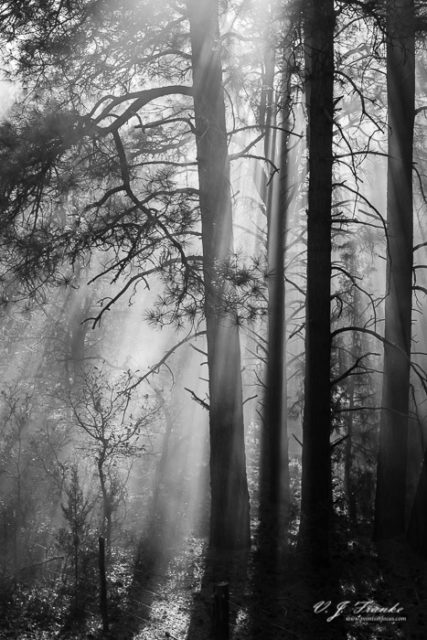
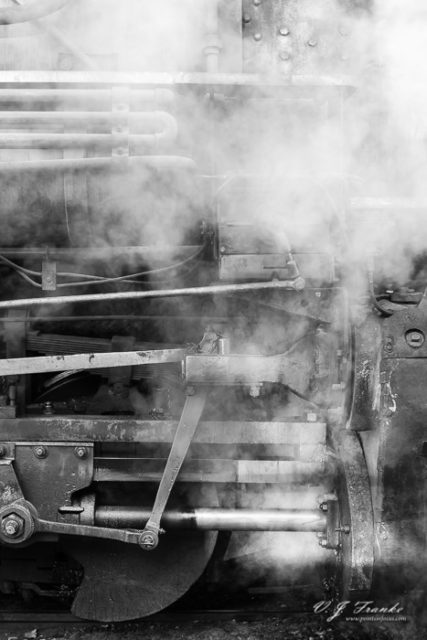
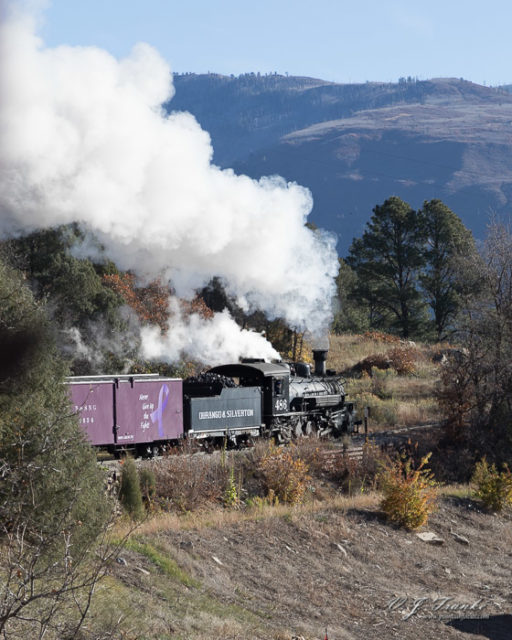
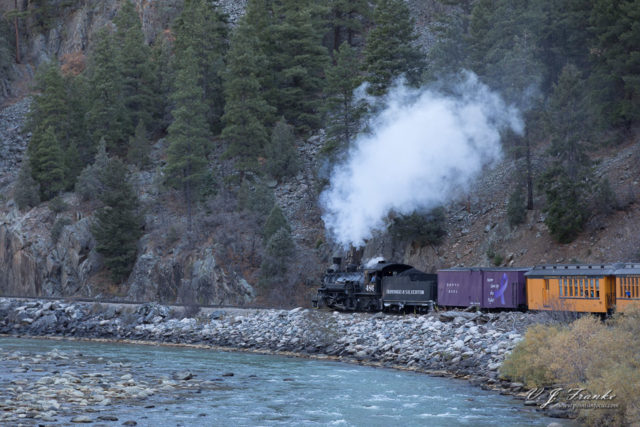
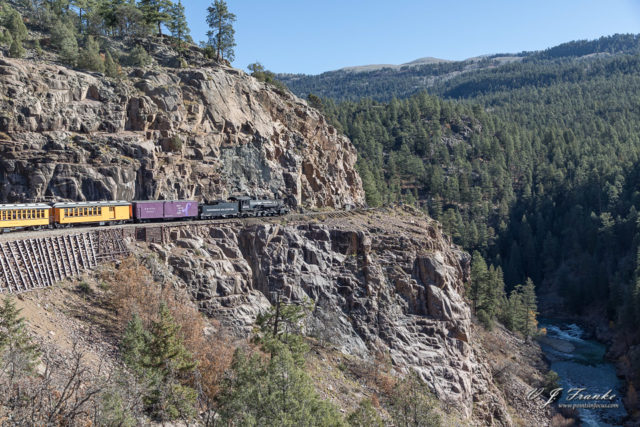
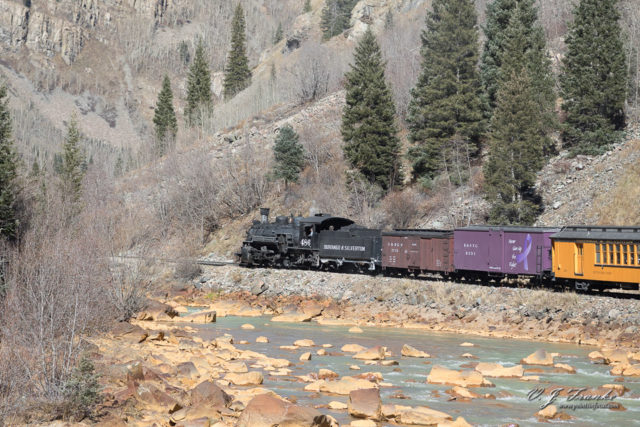
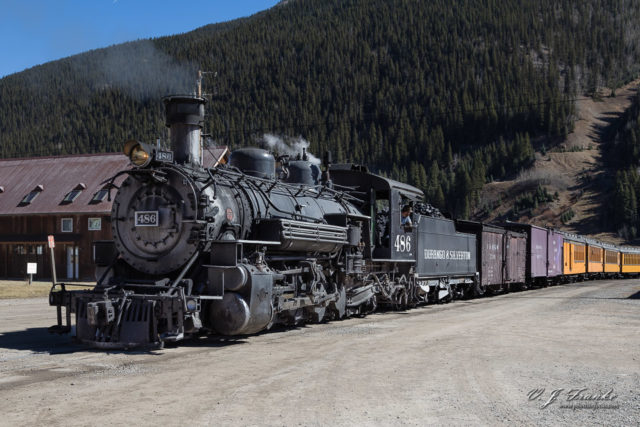
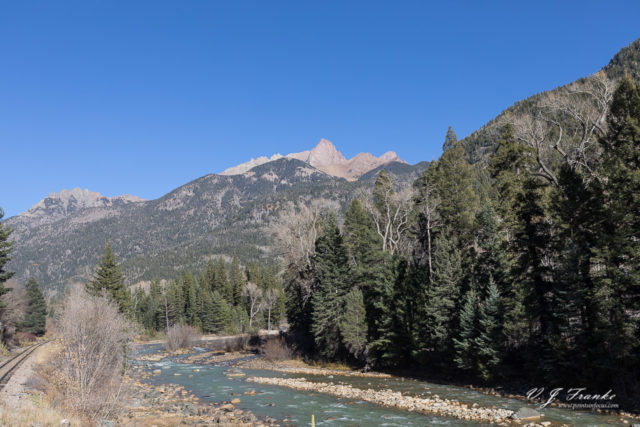
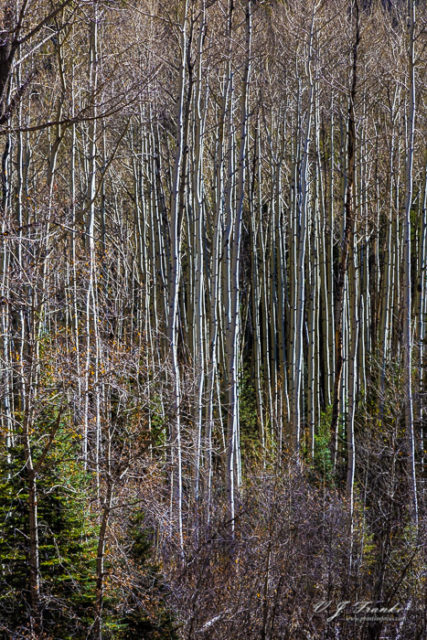
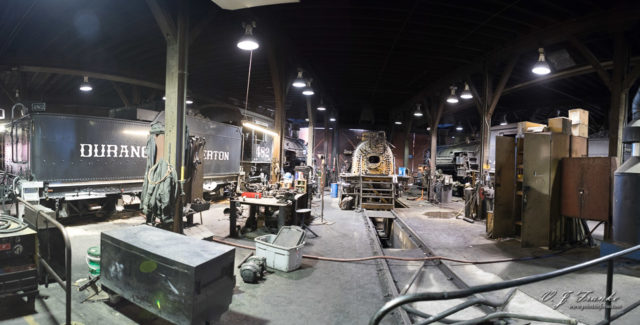



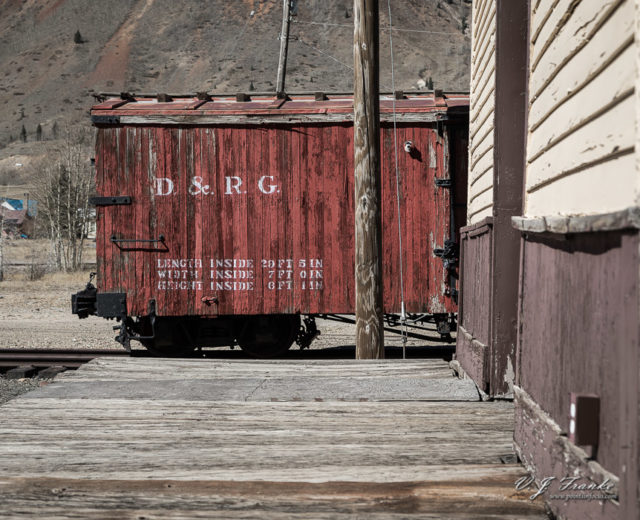

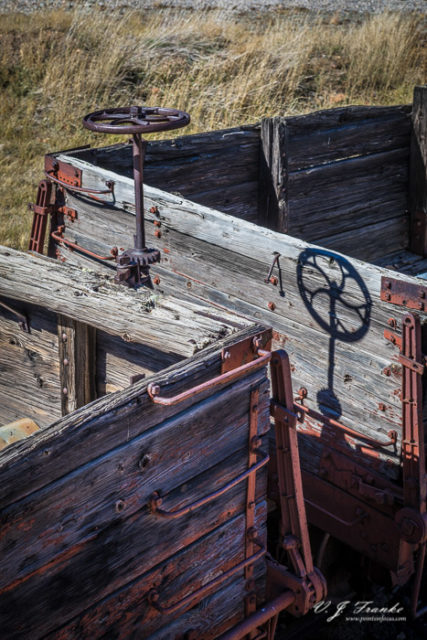

Comments
There are no comments on this article yet. Why don't you start the discussion?